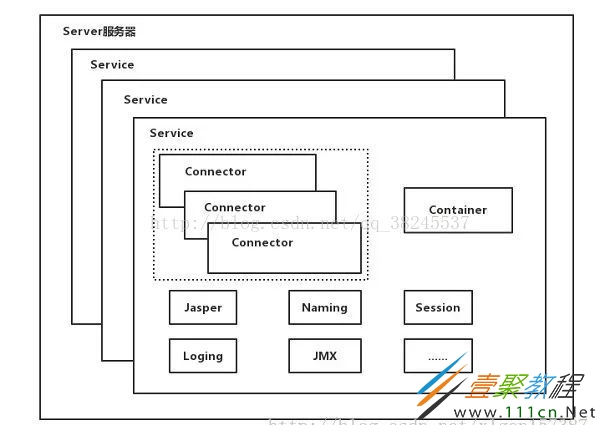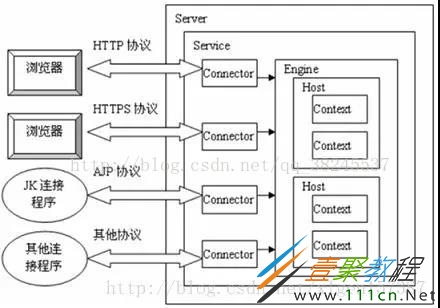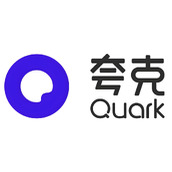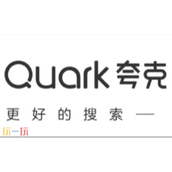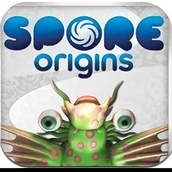SpringBoot内置tomcat启动原理代码解析
本篇文章小编给大家分享一下SpringBoot内置tomcat启动原理代码解析,文章代码介绍的很详细,小编觉得挺不错的,现在分享给大家供大家参考,有需要的小伙伴们可以来看看。
内置tomcat
开发阶段对我们来说使用内置的tomcat是非常够用了,当然也可以使用jetty。
org.springframework.boot spring-boot-starter-web 2.1.6.RELEASE
@SpringBootApplication
public class MySpringbootTomcatStarter{
public static void main(String[] args) {
Long time=System.currentTimeMillis();
SpringApplication.run(MySpringbootTomcatStarter.class);
System.out.println("===应用启动耗时:"+(System.currentTimeMillis()-time)+"===");
}
}
这里是main函数入口,两句代码最耀眼,分别是SpringBootApplication注解和SpringApplication.run()方法。
发布生产
发布的时候,目前大多数的做法还是排除内置的tomcat,打瓦包(war)然后部署在生产的tomcat中,好吧,那打包的时候应该怎么处理?
org.springframework.boot spring-boot-starter-web org.springframework.boot spring-boot-starter-tomcat javax.servlet javax.servlet-api 3.1.0 provided
更新main函数,主要是继承SpringBootServletInitializer,并重写configure()方法。
@SpringBootApplication
public class MySpringbootTomcatStarter extends SpringBootServletInitializer {
public static void main(String[] args) {
Long time=System.currentTimeMillis();
SpringApplication.run(MySpringbootTomcatStarter.class);
System.out.println("===应用启动耗时:"+(System.currentTimeMillis()-time)+"===");
}
@Override
protected SpringApplicationBuilder configure(SpringApplicationBuilder builder) {
return builder.sources(this.getClass());
}
}
从main函数说起
public static ConfigurableApplicationContext run(Class primarySource, String... args) {
return run(new Class[]{primarySource}, args);
}
--这里run方法返回的是ConfigurableApplicationContext
public static ConfigurableApplicationContext run(Class[] primarySources, String[] args) {
return (new SpringApplication(primarySources)).run(args);
}
public ConfigurableApplicationContext run(String... args) {
ConfigurableApplicationContext context = null;
Collection exceptionReporters = new ArrayList();
this.configureHeadlessProperty();
SpringApplicationRunListeners listeners = this.getRunListeners(args);
listeners.starting();
Collection exceptionReporters;
try {
ApplicationArguments applicationArguments = new DefaultApplicationArguments(args);
ConfigurableEnvironment environment = this.prepareEnvironment(listeners, applicationArguments);
this.configureIgnoreBeanInfo(environment);
//打印banner,这里你可以自己涂鸦一下,换成自己项目的logo
Banner printedBanner = this.printBanner(environment);
//创建应用上下文
context = this.createApplicationContext();
exceptionReporters = this.getSpringFactoriesInstances(SpringBootExceptionReporter.class, new Class[]{ConfigurableApplicationContext.class}, context);
//预处理上下文
this.prepareContext(context, environment, listeners, applicationArguments, printedBanner);
//刷新上下文
this.refreshContext(context);
//再刷新上下文
this.afterRefresh(context, applicationArguments);
listeners.started(context);
this.callRunners(context, applicationArguments);
} catch (Throwable var10) {
}
try {
listeners.running(context);
return context;
} catch (Throwable var9) {
}
}
既然我们想知道tomcat在SpringBoot中是怎么启动的,那么run方法中,重点关注创建应用上下文(createApplicationContext)和刷新上下文(refreshContext)。
创建上下文
//创建上下文
protected ConfigurableApplicationContext createApplicationContext() {
Class contextClass = this.applicationContextClass;
if (contextClass == null) {
try {
switch(this.webApplicationType) {
case SERVLET:
//创建AnnotationConfigServletWebServerApplicationContext
contextClass = Class.forName("org.springframework.boot.web.servlet.context.AnnotationConfigServletWebServerApplicationContext");
break;
case REACTIVE:
contextClass = Class.forName("org.springframework.boot.web.reactive.context.AnnotationConfigReactiveWebServerApplicationContext");
break;
default:
contextClass = Class.forName("org.springframework.context.annotation.AnnotationConfigApplicationContext");
}
} catch (ClassNotFoundException var3) {
throw new IllegalStateException("Unable create a default ApplicationContext, please specify an ApplicationContextClass", var3);
}
}
return (ConfigurableApplicationContext)BeanUtils.instantiateClass(contextClass);
}
这里会创建AnnotationConfigServletWebServerApplicationContext类。
而AnnotationConfigServletWebServerApplicationContext类继承了ServletWebServerApplicationContext,而这个类是最终集成了AbstractApplicationContext。
刷新上下文
//SpringApplication.java
//刷新上下文
private void refreshContext(ConfigurableApplicationContext context) {
this.refresh(context);
if (this.registerShutdownHook) {
try {
context.registerShutdownHook();
} catch (AccessControlException var3) {
}
}
}
//这里直接调用最终父类AbstractApplicationContext.refresh()方法
protected void refresh(ApplicationContext applicationContext) {
((AbstractApplicationContext)applicationContext).refresh();
}
//AbstractApplicationContext.java
public void refresh() throws BeansException, IllegalStateException {
synchronized(this.startupShutdownMonitor) {
this.prepareRefresh();
ConfigurableListableBeanFactory beanFactory = this.obtainFreshBeanFactory();
this.prepareBeanFactory(beanFactory);
try {
this.postProcessBeanFactory(beanFactory);
this.invokeBeanFactoryPostProcessors(beanFactory);
this.registerBeanPostProcessors(beanFactory);
this.initMessageSource();
this.initApplicationEventMulticaster();
//调用各个子类的onRefresh()方法,也就说这里要回到子类:ServletWebServerApplicationContext,调用该类的onRefresh()方法
this.onRefresh();
this.registerListeners();
this.finishBeanFactoryInitialization(beanFactory);
this.finishRefresh();
} catch (BeansException var9) {
this.destroyBeans();
this.cancelRefresh(var9);
throw var9;
} finally {
this.resetCommonCaches();
}
}
}
//ServletWebServerApplicationContext.java
//在这个方法里看到了熟悉的面孔,this.createWebServer,神秘的面纱就要揭开了。
protected void onRefresh() {
super.onRefresh();
try {
this.createWebServer();
} catch (Throwable var2) {
}
}
//ServletWebServerApplicationContext.java
//这里是创建webServer,但是还没有启动tomcat,这里是通过ServletWebServerFactory创建,那么接着看下ServletWebServerFactory
private void createWebServer() {
WebServer webServer = this.webServer;
ServletContext servletContext = this.getServletContext();
if (webServer == null && servletContext == null) {
ServletWebServerFactory factory = this.getWebServerFactory();
this.webServer = factory.getWebServer(new ServletContextInitializer[]{this.getSelfInitializer()});
} else if (servletContext != null) {
try {
this.getSelfInitializer().onStartup(servletContext);
} catch (ServletException var4) {
}
}
this.initPropertySources();
}
//接口
public interface ServletWebServerFactory {
WebServer getWebServer(ServletContextInitializer... initializers);
}
//实现
AbstractServletWebServerFactory
JettyServletWebServerFactory
TomcatServletWebServerFactory
UndertowServletWebServerFactory
这里ServletWebServerFactory接口有4个实现类
而其中我们常用的有两个:TomcatServletWebServerFactory和JettyServletWebServerFactory。
//TomcatServletWebServerFactory.java
//这里我们使用的tomcat,所以我们查看TomcatServletWebServerFactory。到这里总算是看到了tomcat的踪迹。
@Override
public WebServer getWebServer(ServletContextInitializer... initializers) {
Tomcat tomcat = new Tomcat();
File baseDir = (this.baseDirectory != null) ? this.baseDirectory : createTempDir("tomcat");
tomcat.setBaseDir(baseDir.getAbsolutePath());
//创建Connector对象
Connector connector = new Connector(this.protocol);
tomcat.getService().addConnector(connector);
customizeConnector(connector);
tomcat.setConnector(connector);
tomcat.getHost().setAutoDeploy(false);
configureEngine(tomcat.getEngine());
for (Connector additionalConnector : this.additionalTomcatConnectors) {
tomcat.getService().addConnector(additionalConnector);
}
prepareContext(tomcat.getHost(), initializers);
return getTomcatWebServer(tomcat);
}
protected TomcatWebServer getTomcatWebServer(Tomcat tomcat) {
return new TomcatWebServer(tomcat, getPort() >= 0);
}
//Tomcat.java
//返回Engine容器,看到这里,如果熟悉tomcat源码的话,对engine不会感到陌生。
public Engine getEngine() {
Service service = getServer().findServices()[0];
if (service.getContainer() != null) {
return service.getContainer();
}
Engine engine = new StandardEngine();
engine.setName( "Tomcat" );
engine.setDefaultHost(hostname);
engine.setRealm(createDefaultRealm());
service.setContainer(engine);
return engine;
}
//Engine是最高级别容器,Host是Engine的子容器,Context是Host的子容器,Wrapper是Context的子容器
getWebServer这个方法创建了Tomcat对象,并且做了两件重要的事情:把Connector对象添加到tomcat中,configureEngine(tomcat.getEngine());
getWebServer方法返回的是TomcatWebServer。
//TomcatWebServer.java
//这里调用构造函数实例化TomcatWebServer
public TomcatWebServer(Tomcat tomcat, boolean autoStart) {
Assert.notNull(tomcat, "Tomcat Server must not be null");
this.tomcat = tomcat;
this.autoStart = autoStart;
initialize();
}
private void initialize() throws WebServerException {
//在控制台会看到这句日志
logger.info("Tomcat initialized with port(s): " + getPortsDescription(false));
synchronized (this.monitor) {
try {
addInstanceIdToEngineName();
Context context = findContext();
context.addLifecycleListener((event) -> {
if (context.equals(event.getSource()) && Lifecycle.START_EVENT.equals(event.getType())) {
removeServiceConnectors();
}
});
//===启动tomcat服务===
this.tomcat.start();
rethrowDeferredStartupExceptions();
try {
ContextBindings.bindClassLoader(context, context.getNamingToken(), getClass().getClassLoader());
}
catch (NamingException ex) {
}
//开启阻塞非守护进程
startDaemonAwaitThread();
}
catch (Exception ex) {
stopSilently();
destroySilently();
throw new WebServerException("Unable to start embedded Tomcat", ex);
}
}
}
//Tomcat.java
public void start() throws LifecycleException {
getServer();
server.start();
}
//这里server.start又会回到TomcatWebServer的
public void stop() throws LifecycleException {
getServer();
server.stop();
}
//TomcatWebServer.java
//启动tomcat服务
@Override
public void start() throws WebServerException {
synchronized (this.monitor) {
if (this.started) {
return;
}
try {
addPreviouslyRemovedConnectors();
Connector connector = this.tomcat.getConnector();
if (connector != null && this.autoStart) {
performDeferredLoadOnStartup();
}
checkThatConnectorsHaveStarted();
this.started = true;
//在控制台打印这句日志,如果在yml设置了上下文,这里会打印
logger.info("Tomcat started on port(s): " + getPortsDescription(true) + " with context path '"
+ getContextPath() + "'");
}
catch (ConnectorStartFailedException ex) {
stopSilently();
throw ex;
}
catch (Exception ex) {
throw new WebServerException("Unable to start embedded Tomcat server", ex);
}
finally {
Context context = findContext();
ContextBindings.unbindClassLoader(context, context.getNamingToken(), getClass().getClassLoader());
}
}
}
//关闭tomcat服务
@Override
public void stop() throws WebServerException {
synchronized (this.monitor) {
boolean wasStarted = this.started;
try {
this.started = false;
try {
stopTomcat();
this.tomcat.destroy();
}
catch (LifecycleException ex) {
}
}
catch (Exception ex) {
throw new WebServerException("Unable to stop embedded Tomcat", ex);
}
finally {
if (wasStarted) {
containerCounter.decrementAndGet();
}
}
}
}
附:tomcat顶层结构图
tomcat最顶层容器是Server,代表着整个服务器,一个Server包含多个Service。从上图可以看除Service主要包括多个Connector和一个Container。Connector用来处理连接相关的事情,并提供Socket到Request和Response相关转化。Container用于封装和管理Servlet,以及处理具体的Request请求。那么上文提到的Engine>Host>Context>Wrapper容器又是怎么回事呢? 我们来看下图:
综上所述,一个tomcat只包含一个Server,一个Server可以包含多个Service,一个Service只有一个Container,但有多个Connector,这样一个服务可以处理多个连接。
多个Connector和一个Container就形成了一个Service,有了Service就可以对外提供服务了,但是Service要提供服务又必须提供一个宿主环境,那就非Server莫属了,所以整个tomcat的声明周期都由Server控制。
相关文章
精彩推荐
-
 下载
下载孢子2生物进化中文版(Spores)
模拟经营 孢子2生物进化中文版(Spores)孢子2生物进化中文版让我们来做一回疯狂的博士,打造一个属于自
-
 下载
下载叫我万岁爷九游官方版
模拟经营 叫我万岁爷九游官方版叫我万岁爷带你体验当换地点感觉,全新的模拟手游大作让你开始一
-
 下载
下载梦回凤歌
模拟经营 梦回凤歌梦回凤歌手游中你将步入古代的宫廷纷争之中,本想度过美好幸福的
-
 下载
下载洋果子店rose最新版本
模拟经营 洋果子店rose最新版本洋果子店最新版是一款十分容易让人垂涎的开店经营类手游。游戏玩
-
 下载
下载明日大亨最新版
模拟经营 明日大亨最新版明日大亨手游,一个非常经典有趣的模拟经营类型的商战手游,在游


